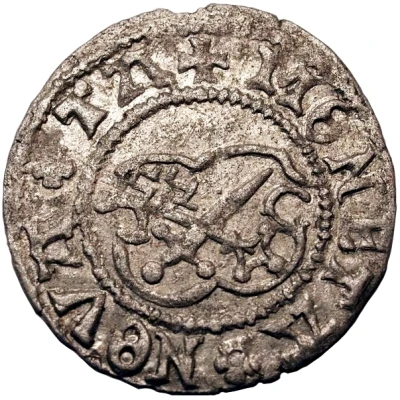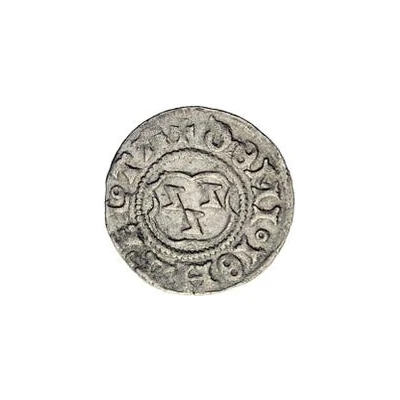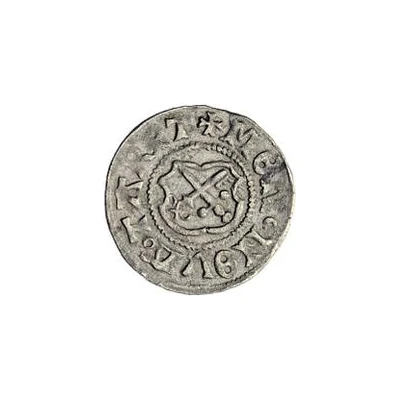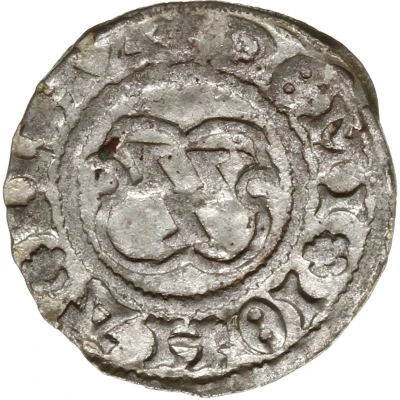
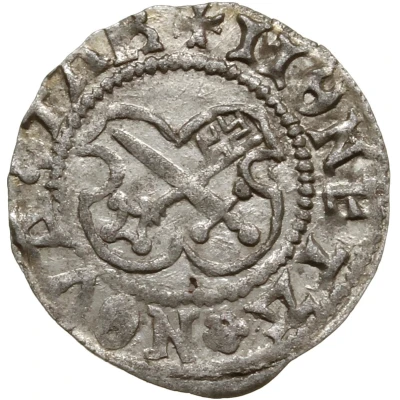

© Warszawskie Centrum Numizmatyczne s.j.
1 Schilling - Johannes VI Bey Curvy shields; sword right; key left and up ND
| Billon (.1875 silver) | 1.13 g | 18 mm |
| Issuer | Bishopric of Dorpat (Livonian Confederation) |
|---|---|
| Bishop | Johannes VI Bey (1528-1543) |
| Type | Standard circulation coin |
| Years | 1528-1539 |
| Value | 1 Schilling |
| Currency | Schilling (1422-1558) |
| Composition | Billon (.1875 silver) |
| Weight | 1.13 g |
| Diameter | 18 mm |
| Thickness | 0.7 mm |
| Shape | Round (irregular) |
| Technique | Hammered |
| Orientation | Variable alignment ↺ |
| Demonetized | Yes |
| Updated | 2024-10-06 |
| Numista | N#133229 |
|---|---|
| Rarity index | 92% |
Reverse
Crossed sword and key in curvy shield surrounded by legend.
Script: Latin (uncial)
Lettering: MONETA · NOVA · TA
Lettering (regular font): MONETA · NOVA · TA
Translation:
Moneta Nova Darpatensis
New coin of Dorpat
Edge
Plain
Comment
The curviness of the shield may vary, and the exact lettering of the surrounding legend may vary.No date:
1) DOMI · IOHA · EL · TA / MONETA · NOVA · TAR
2) DOMI · IOHA · EL · TA / MONETA · NOVA · TA
3) DOMI · IOHA · EL · TA / MONE · NOVA · TARPT
Interesting fact
One interesting fact about this coin is that it was minted during the reign of Johannes VI Bey, who was the Bishop of Dorpat (now known as Tartu, Estonia) from 1528 to 1539. The coin features a unique design, with curved shields, a sword, and a key, which symbolize the bishop's authority and power. Additionally, the coin was made of billon, a type of alloy that contains .1875 silver, which was a common practice during that time period. Despite its small weight of 1.13 grams, this coin is a valuable piece of history that provides insight into the economic and political systems of the Livonian Confederation during the 16th century.

